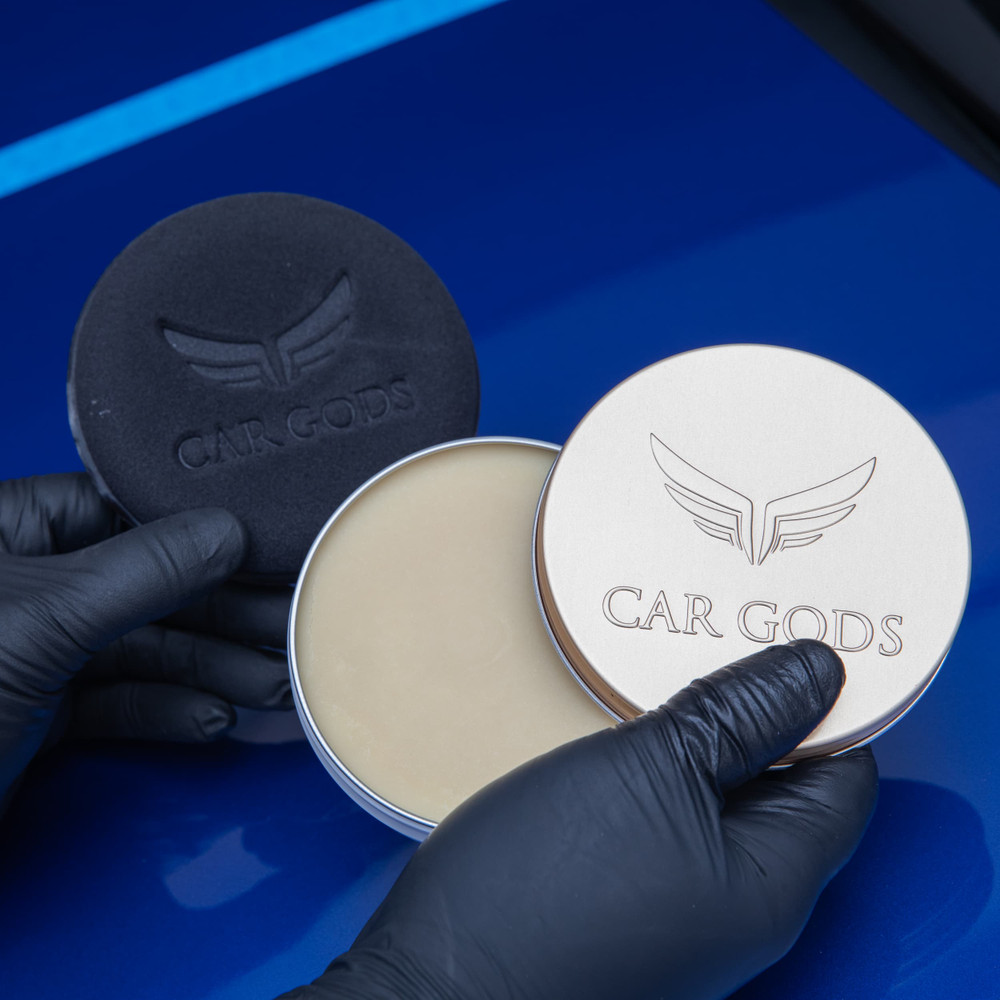
Waxing your car is a vital step in the detailing process. It is the best way to keep your car looking fresh off the showroom floor, whilst also protecting your paintwork from nasty damaging contaminants in the environment. But with so many different wax products available where do you even start?
That’s where we come in – we are answering your questions to remove the mystery behind waxes so that you can find what is best for you.
What is a hard wax and liquid wax?
When shopping for car wax you have probably noticed that it is not as simple as picking up a tin or bottle. Car wax comes in a bunch of different types and boasting even more effects beyond standard protection but to put waxes simply they come in two categories – hard wax or liquid wax.
The differences between these two are straightforward; hard wax or paste wax as it is sometimes known typically comes in a tin and is made mostly from natural carnauba. Hard wax is seen as more a traditional wax and is applied by hand with an applicator pad.
Liquid Wax comes in a bottle and will generally contain synthetic polymers, paint conditioners and cleaning agents to provide additional effects such as restoring depth of colour and removing light scratches alongside the natural carnauba wax protection. These waxes can be applied via hand applicator or via buffing/polishing machine.

But which is better? Let's break it down!
Properties of liquid wax
- Great for beginners, liquid wax is much easier to apply requiring less effort.
- Liquid Waxes typically take less time to cure making the process quicker.
- Due to usually carrying less silicone/wax content, liquid waxes are usually cheaper.
- Liquid Waxes contain detergents and synthetics providing other benefits beyond just the standard protection of a wax. These can include cleaning agents that can remove swirl marks and pigments for specific-coloured cars to fill in minor scratches.
Properties of hard wax
- Hard waxes require more elbow grease to apply as they tend to be thicker and require more pressure to apply to your car’s paintwork.
- Hard waxes are more concentrated which means they have a higher silicone content which provides a thicker layer of protection for a more durable finish.
- Due to the higher concentration of carnauba, hard waxes deliver a glossier look to your paintwork and better water-beading effects.
- Traditional hard waxes can also last longer than liquid wax alternatives due to their higher resilience.

The verdict
We have broken down the differences and listed the benefits but after all that which is better? The answer much like the breakdown between these two types of wax is simple – whichever works best for you. If you are a weekend warrior and only have a limited amount of time to complete your detailing process then liquid waxes are perfect for their easy to apply, quick to cure properties. If you have been lucky to secure yourself some quality time to really take your time with your paintwork, then hard wax will give you the best results.
ALWAYS REMEMBER: As a general note, always wash a vehicle before waxing it. Doing this removes surface dirt, debris, and grease so that you can apply the wax cleanly and evenly over the vehicle's clear coat. Not washing a car first can cause the wax application process to grind dirt and other particles into the paintwork.
